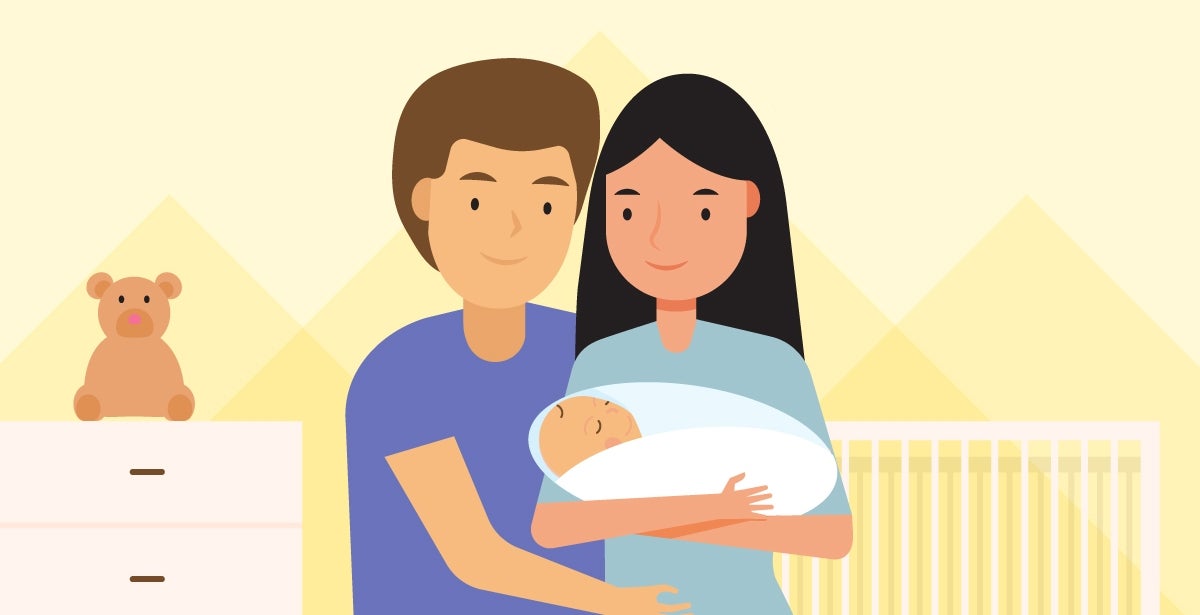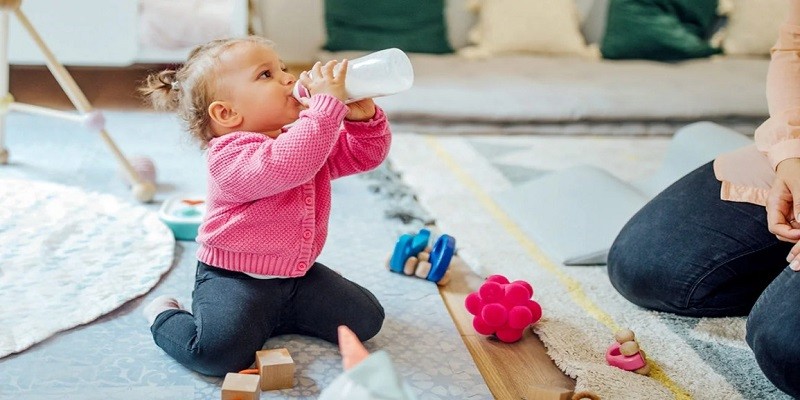The spinal cord and brain develop first in a developing child, followed by the growth of functional eyes and development of hands. In the journey of prenatal development, various changes and milestones occur in a developing child.
However, the very first step in this miraculous process is the growth and development of the spinal cord and brain. These vital organs are the foundation upon which the rest of the body and its functions are built. After the spinal cord and brain, the next milestones occur, such as the growth of functional eyes and the development of hands.
It is fascinating to witness the intricate and ordered progression of a fetus’s development, from the very beginning until the birth of a beautiful human being. Throughout the first year of life, babies continue to learn and develop, exploring their surroundings and building their cognitive abilities. Understanding the stages of fetal development is not only awe-inspiring but also crucial for providing the necessary care and support for a growing child.
The Development Of The Spinal Cord And Brain
During the development of a child, the brain and spinal cord are the first parts of the body to grow. This precedes the growth of other important organs, such as the heart and eyes.
The Early Growth Of The Spinal Cord And Brain In A Developing Child
The development of the spinal cord and brain is a crucial aspect of a developing child’s growth. It starts very early on in the prenatal stage, even before the mother is aware of her pregnancy. By the end of the third week, the neural tube, which later becomes the spinal cord and brain, begins to form.
This early growth involves various stages and processes. Here’s a breakdown of how the spinal cord and brain develop:
- Formation of the neural tube: During the first few weeks after conception, the neural plate forms along the back of the embryo. Over time, this plate folds inward to create a hollow tube called the neural tube. The top part develops into the brain while the rest becomes the spinal cord.
- Growth of the spinal cord: As the embryo continues to develop, the neural tube elongates and differentiates into various segments. These segments eventually become the different regions of the spinal cord, from the cervical to the sacral regions.
- Development of the brain: Simultaneously, the top part of the neural tube undergoes complex processes that result in the formation of the brain. Different regions and structures of the brain, such as the forebrain, midbrain, and hindbrain, gradually take shape and develop specific functions.
How The Spinal Cord And Brain Form The Foundation For Further Development
The early growth of the spinal cord and brain sets the foundation for the further development of a child. These vital organs play essential roles in the overall functioning and coordination of the body’s systems. Here are some ways the spinal cord and brain contribute to a child’s development:
- Sensory perception and motor skills: The spinal cord serves as a pathway for nerve signals, connecting the brain to different parts of the body. This connectivity allows the child to develop sensory perception and motor skills, enabling them to interact with their environment.
- Cognitive abilities and learning: The brain, being the control center of the body, influences cognitive abilities, learning, memory, attention, and problem-solving skills. As the brain develops further, it lays the groundwork for the child’s ability to think, understand, and process information.
- Emotional and social development: The brain’s complex structures, such as the limbic system and prefrontal cortex, play a crucial role in emotional and social development. These regions help regulate emotions, understand others’ feelings, and develop social skills.
The early growth of the spinal cord and brain in a developing child forms the foundation for their overall development. From sensory perception and motor skills to cognitive abilities and emotional development, these organs shape the child’s growth and potential.

Credit: studyonline.ecu.edu.au
The Functionality Of The Eyes
When it comes to the development of a child, various milestones are reached in a specific order. One of the first and most crucial developments is the functionality of the eyes. The ability to see plays a vital role in a child’s overall growth and learning process. In this article, we will explore when the eyes of a developing child are able to see and the importance of visual development in early childhood.
When The Eyes Of A Developing Child Are Able To See
The eyes of a developing child begin to show signs of functionality during the embryonic stage, which occurs in the first trimester of pregnancy. At around week 4-5 of gestation, the eyes start to form as small depressions on the sides of the developing face. These depressions gradually deepen and form the structures of the eyes, such as the cornea, iris, and lens.
By week 7-8, the developing baby’s eyes become more recognizable, with the retina starting to develop. The retina is crucial for vision as it contains specialized cells called photoreceptors that detect light and transmit visual information to the brain. At this stage, although rudimentary, the eyes of the developing child are sensitive to light.
As the pregnancy progresses into the second trimester, around week 14-16, the eyelids of the developing child start to fuse together, protecting the delicate structures of the eyes. This fusion allows for the necessary development of the eyelashes and tear ducts, which play a crucial role in keeping the eyes moist and protected.
By week 24, the eyes of the developing child are almost fully formed. The baby’s retina becomes more mature, and the eyelids begin to open and close as the fetus begins to practice blinking. Although the eyes are still in their early stages of development, they are now capable of perceiving light and simple visual stimuli.
The Importance Of Visual Development In Early Childhood
Visual development in early childhood is of utmost importance as it lays the foundation for a child’s cognitive and motor skills. The ability to see and interpret visual stimulus enables children to explore and learn about the world around them.
During the first year of life, babies learn to focus their vision, reach out and explore their surroundings, and make connections between visual stimuli and objects. This visual exploration and learning process form the basis for cognitive development and language acquisition.
Proper visual development also plays a crucial role in developing hand-eye coordination, depth perception, and spatial awareness. These skills are essential for activities such as writing, reading, playing sports, and navigating the environment.
Ensuring the healthy and optimal development of a child’s eyes is thus crucial during early childhood. Regular eye exams, providing a visually stimulating environment, and engaging in activities that promote visual development can all contribute to the overall well-being and success of a developing child.
The Beating Of The Heart
The first thing that happens to a developing child is the beating of the heart. This is followed by the growth of the brain and spinal cord, as well as the development of other body parts such as the eyes and hands.
One of the most significant milestones in the development of a child is the initiation of the heartbeat. It is a magical moment that signifies the beginning of life and sets the stage for the child’s overall growth and well-being.
The Initiation Of The Heartbeat In A Developing Child
During the early stages of pregnancy, around the end of the third week or the beginning of the fourth week, the tiny heart begins to form. It starts as a simple tube and gradually develops into a complex organ that will play a vital role throughout the child’s life.
The development of the heart starts with the fusion of cells, then the formation of specialized tissues and chambers. As the weeks go by, the heart starts to beat, and this is a remarkable event that marks the beginning of the child’s cardiovascular system.
This initiation of the heartbeat is a critical milestone as it indicates that the child’s major organs and systems are in place and functioning. It is an exciting time for expectant parents as they can now hear the rhythmic sound of life within the womb.
The Significance Of A Beating Heart In The Overall Development Of The Child
The beating heart is not only a physical manifestation of life, but it also plays a crucial role in the overall development of the child. Here’s why:
- The heart is responsible for pumping oxygen-rich blood to all parts of the body, ensuring the delivery of nutrients and oxygen necessary for growth and development.
- It supports the development of other organs and systems, enabling them to function optimally.
- The heartbeat helps regulate the child’s body temperature, ensuring a stable environment for growth.
- It also aids in the development of the circulatory system, which is responsible for removing waste and toxins from the body.
In short, the beating heart acts as the lifeline for the developing child, providing the necessary nourishment and support for the entire body.
As the child grows, the heart continues to mature and strengthen, adapting to the increasing demands of the developing body. It serves as a constant reminder of the remarkable journey of life unfolding, and the miraculous process of human development.
Frequently Asked Questions On Which Happens To A Developing Child First?
What Is The First Organ To Develop In A Child?
The first organ to develop in a child is the brain and spinal cord.
When Does The Heart Start Beating In A Developing Child?
The heart starts beating first in a developing child.
What Are The Stages Of Fetal Development?
The stages of fetal development include prenatal development, growth of organs, and formation of body systems.
When Does A Developing Child’s Vision Start To Develop?
A developing child’s vision starts to develop in the first year of life.
How Does A Developing Fetus Change In The Third Trimester?
In the third trimester, a developing fetus undergoes rapid growth, gains weight, and develops fully functioning organs.
Conclusion
To a developing child, the first significant milestone is the beating of the heart. This is followed by the growth of the brain and spinal cord. As the child progresses, other developments such as the formation of teeth and the ability to see take place.
Understanding the stages of fetal development is crucial in nurturing the growing brain and ensuring a healthy pregnancy. It is fascinating to witness the gradual progression of a child’s growth and the wonders of life unfolding.
Last Updated on January 15, 2025 by Marjorie R. Rogers, MA (English), Certified Consultant

